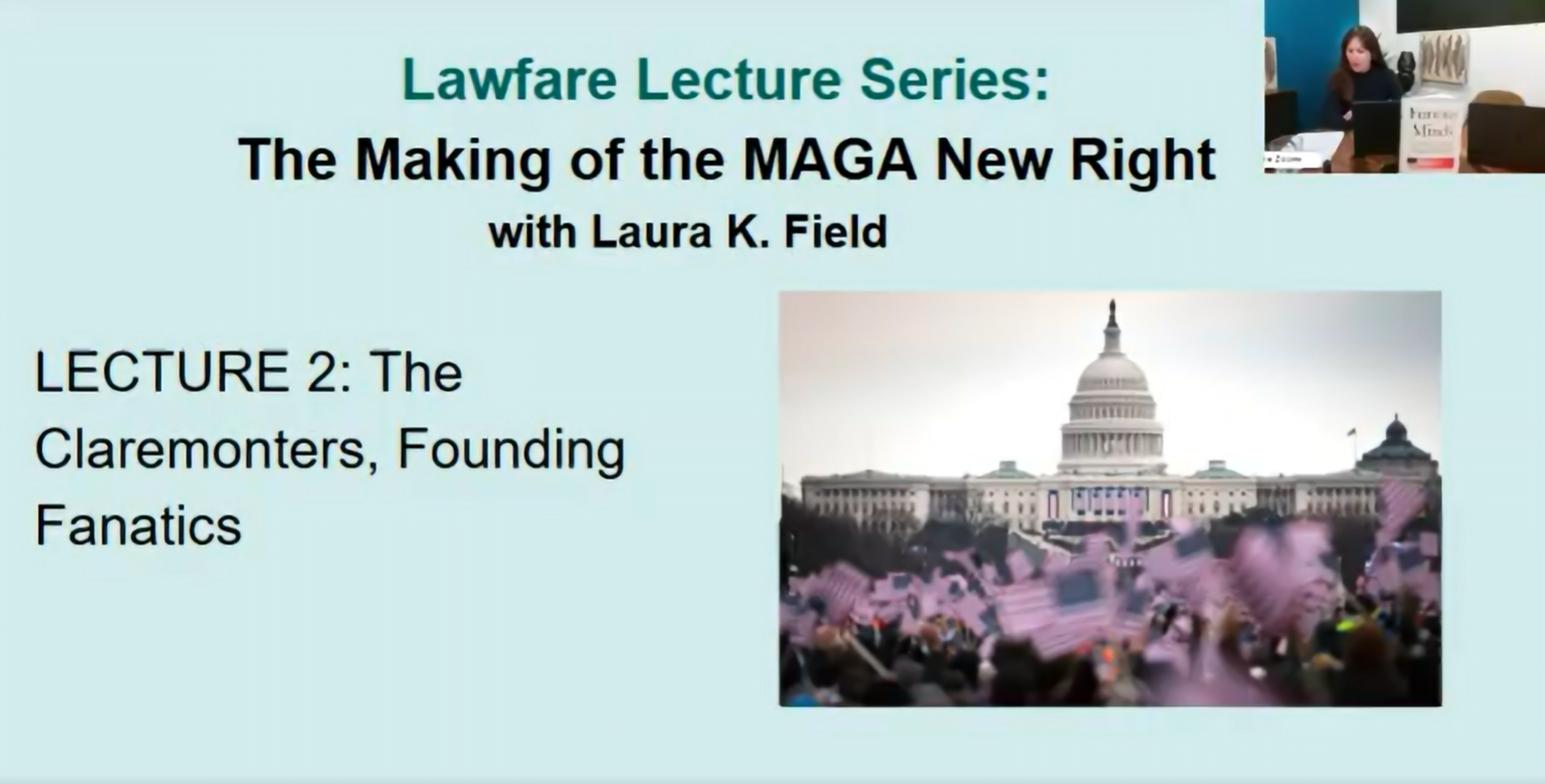Fighting Tunnels
Published by The Lawfare Institute
in Cooperation With

Review of Daphne Richemond-Barak’s “Underground Warfare” (Oxford, 2018).
***
When U.S. Marines and Israeli paratroopers undertook their biannual joint training exercises in March 2018, the urban warfare segment featured “learning how to fight in tunnels, something marines haven’t had to do since the Vietnam War,” according to the Marines’ battalion commander. The inclusion of tunnel warfare in training reflects increased awareness of the use of tunnels as a method of warfare, particularly in the wake of Hamas’s use of tunnels to launch attacks across the border between the Gaza Strip and Israel helping to trigger Israel’s 2014 Operation Protective Edge campaign. While the military use of tunnels has an ancient pedigree, a number of observers have noted the growing use of tunnels in recent years, particularly as a component of nonstate armed actors’ arsenal of techniques of asymmetric warfare. That trend has now received the carefully researched treatment it deserves in Daphne Richemond-Barak’s new book, “Underground Warfare.”
Richemond-Barak is a French-Israeli scholar who teaches at the Interdisciplinary Center in Herzliya. She has scoured both the historical record and recent practice to provide a detailed, nuanced, and balanced assessment of both the operational and legal challenges tunnels present in armed conflict. Her book is a welcome contribution to a long neglected yet increasingly important topic—welcome not only for its groundbreaking (forgive the pun) analysis of tunnels’ use in warfare, but also as a model for studies of other military methods that have not received detailed assessments under the laws of armed conflict. “Underground Warfare” proceeds in three parts: history; operational and strategic considerations; and legal analysis.
History
Richemond-Barak notes in the first of her two historical chapters that human beings have “always used tunnels in conflict, either to survive a siege, to provide safe passage for civilians and military forces during hostilities, or to launch attacks against the enemy” (3). Described in this way, “Underground Warfare” importantly distinguishes its subject from another category of underground structures: deeply-buried underground facilities, aka “UGFs,” which have gained more frequent use by states in the last three decades as means of shielding command-and-control personnel and infrastructure and weapons development and storage facilities from aerial attack. Through the ages, armed forces have adapted tunnels to serve as adjuncts to the military methods of the day. From ancient times through the Middle Ages, when siege warfare figured prominently in battles, tunnels could be used both by attackers who sought to penetrate walled cities and by defenders who sought to escape the stranglehold of encircling siege lines. During the American Civil War and particularly during World War I, “tunnel mining,” in which tunnels are used as a means for delivering and detonating large collections of explosives under or behind enemy lines, became an important offensive tactic and, indeed, prompted the training of specialized forces for the task.
More recent conflicts in which tunnels have had an important role include the defense of Pacific Ocean islands by the Japanese in World War II; North Korean preparation of cross-border tunnels for invasion of the South; Viet Cong reliance on complex tunnel networks for guerilla warfare; and Islamist groups’ use of tunnels for both offense and defense in Afghanistan, Mali, Iraq, and Syria. In these and other modern conflicts, tunnels have played a variety of operational roles. Looking at the most recent uses of tunnels in armed conflict, both through anecdotal reporting and through a survey of references to tunnel warfare in the New York Times since 1969, Richemond-Barak highlights two trends in particular: first, the growing use of tunnels by nonstate armed groups and, second, the increasing development of tunnels in urban areas (35-36). Because tunnels require relatively simple technology to build and use and because they offer the key advantage of avoidance of detection, even from many sophisticated surveillance methods, Richemond-Barak predicts the use of tunnels by nonstate armed organizations will increase (53-54). Hamas’s use of tunnels in Gaza has been seen as a success by many other nonstate groups in the Middle East, she reports, and some recent tunneling efforts in the Syrian conflict, for example, apparently have drawn on Hamas’s experience (42-43).
Strategy and Tactics
Richemond-Barak urges states confronting tunnels in combat to develop a careful strategy of response. In aid of those efforts, she offers both a typology of tunnels as used in conflict and recommendations about the key components that an anti-tunnel strategy should feature. Not least, she emphasizes the special psychological effects of tunnels on those who have to fight in them—as well as the psychological effects on civilians who may feel threatened by tunnels, whether because their homes sit above tunnels (as is true for many residents of Gaza) or because their homes may be targeted using tunnels (as is true for residents of some Israeli towns near Gaza). States looking to prevent adversaries from using tunnels in combat, Richemond-Barak says, should focus on (i) detection and mapping, (ii) destruction or neutralization, (iii) prevention and monitoring, and (iv) cooperation.
The difficulty of detecting tunnels is their cardinal virtue for those who use them. This may seem strange in our technological age—surely robotics, sensors, artificial intelligence, and all manner of advanced tech must be capable of solving the problem. After reviewing the many less-than-successful methods of tunnel detection that have been tried, however, Richemond-Barak concludes that we are unlikely to see a technological quick-fix. And so, beyond attempts by states threatened by tunnels to develop high-tech methods of detecting underground passageways from above-ground, “Underground Warfare” contends that states need to diversify their efforts across varied of forms of intelligence about tunnel presence and location. These include, for example, human informers as well as surveillance focused on the above-ground dirt, rocks and other debris that have to be removed and deposited somewhere in the process of building tunnels (88-104).
Richemond-Barak is right to emphasize a combined approach to anti-tunnel intelligence gathering. But given the substantial investments Israel, the U.S., and some other countries are making in improved sensor detection technologies, the next decade or two may see a decisive turn in favor of countries possessing such technologies. If so, tunnels may lose some of their appeal to nonstate armed groups fighting technologically sophisticated state adversaries. The wide operational use of tunnels might recede to frequent use only in conflicts between different nonstate armed actors or between nonstate armed organizations and less-well-equipped governments.
Detecting tunnels is hard. But neutralizing tunnels is nearly as difficult as finding them. Filling them with water, cement, or various gases are all techniques that have been tried, with disappointingly mixed results (105-111). Explosives, whether dropped from above or inserted into tunnels, may be less than completely effective. Sending in soldiers predictably leads to significant casualties. Particularly given these difficulties, Richemond-Barak emphasizes the need for more effective monitoring to prevent tunnel construction in the first place, as well as more effective international cooperation to thwart the diffusion of tunneling tactics (111-115).
Law
Trained in international law, Richemond-Barak devotes the back half of her book to analyzing legal questions posed by the use of tunnels under the law of armed conflict and of resort to force. With respect to jus ad bellum, Richemond-Barak recognizes that the digging of tunnels, even across borders, will rarely constitute an “armed attack” triggering a right of self-defense, unless the tunnels are put to active and substantial military use, or are part of a larger course of armed conflict between the digging party and defending one. But she suggests nonetheless that, short of being used in a consummated attack, tunnels may still be arrayed along a spectrum, depending on a number of considerations. These include the confidence with which their intended use can be identified; whether they have crossed a border; and whether they are part of a larger network of potential underground attack routes. Victim states may use proportional countermeasures to respond to violations of their sovereignty and territorial integrity along nearly the entire spectrum (though not, however, when a single tunnel has yet to breach a border).
When it comes to the use of force to destroy tunnels reaching back across the border, Richemond-Barak acknowledges that here the legal calculus is much less certain. Drawing analogies to arguments used to justify humanitarian intervention or to justify defensive responses to cyber-attacks, Richemond-Barak argues that “the plea of necessity allows states—and only states—to safeguard their security interests and their right to sovereignty and territorial integrity, while limiting situations of all-out war” (153). In her view, necessity “offers the best hope as an exceptional measure likely to preserve the interests of the victim state, without leading to escalation” (158).
Tunnels raise challenges not only under jus ad bellum but also under jus in bello. Richemond-Barak makes the case that “[u]nderground warfare—in any of its many forms—does not amount to perfidy” (207), which is prohibited by the law of war. Tunnels, in her view, “are not weapons,” notwithstanding that the “digging and use of tunnels must comply” with the basic principle of distinction between civilians and combatants, and between civilian objects and military objectives (207). It follows that tunnels and other underground structures “must be kept separate from civilians and civilian infrastructure. They should not serve to immunize military objectives or spread terror among the civilian population” (207).
The implications of the principle of distinction are particularly important, in Richemond-Barak’s view, because of the increasing use of tunnels in or near urban and other built-up residential areas. Thus, the final chapter of “Underground Warfare” is devoted to considering the “legal and operational issues arising out of the use of tunnels near civilians, by civilians, and against civilians” (248). Amid the many practical and legal dilemmas tunnels pose for those who are threatened by them, Richemond-Barak urges that the law can better deter the use of tunnels in ways that menace civilians by first “[a]cknowledging that the digging of tunnels in residential neighborhoods violates the principle of distinction and obligations owed by states to their own civilians under the law of armed conflict” (249).
Whether Richemond-Barak’s prediction that tunnels will become an increasingly common feature of armed conflicts proves to be accurate remains to be seen. Spurred by the current surge in tunnel use, defending states may succeed in developing increasingly better technologies of detection and destruction that become effective enough to push their adversaries out from underground. But they would also have to develop more effective technologies for defeating adversaries in tunnels that better sensors are able to find.
Whether we are experiencing only a brief tunnel heyday or longer period of increased reliance on tunnels in armed conflicts, however, Richemond-Barak’s study provides a very helpful analysis of the operational and legal challenges underground warfare presents. It is one that has been needed by operational planners and operational legal advisers for too long. Though she advances her own answers to many of the questions she raises, her larger goal is to “expose the difficulties” and put an end to assumptions that underground warfare “raises no issues of its own” under the law of armed conflict, or that its special features can be quickly dismissed under some blanket permissive legal interpretation. Getting past these assumptions, however, requires going on to elaborate a conceptual framework under the law of armed conflict specific to tunnels and specific to their features in armed conflict.
In these analytic tasks—both the critique of easy assumptions and elaboration of a legal framework—Richemond-Barak succeeds admirably. In the granular attention to operational realities that “Underground Warfare” provides, and in its use of analogies from other methods of warfare, Richemond-Barak’s book provides a model for analyses of other military methods that have not so far received detailed assessments under the laws of armed conflict.



.png?sfvrsn=bd249d6d_5)

